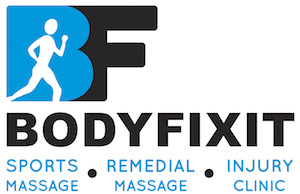Oh for the days of yore, when the words ‘joint’ and ‘pain’ weren’t used together in your vocabulary!
As time passes though, your joints do lose their get-up-and-go, and simple movements, especially in your knees and hips can become painful. Hip and knee disorders can however occur at any age and are often caused by exercise, overuse or degeneration.
One of the most common conditions that causes both hip pain and knee pain is osteoarthritis (OA), a form of degenerative joint pain caused by wear and tear on your joints.
As you age, the cartilage that cushions your joints starts to wear down, causing the bones to rub together. The bone-on-bone action leads to inflammation of the joints. OA most commonly affects the joints in your arms and legs, including your fingers, wrists, knees, ankles, and hips and even your lower back.
At the outset of OA, the cartilage between your joints becomes worn and torn as well as inflamed. The wear-and-tear process leads to loss of water in the joint, causing the cartilage to harden, which makes moving the surrounding joint more difficult.
Another leading cause of pain and problems with your hip and knee joints is lack of exercise. To improve strength and mobility, it is important that the exercise is safe, controlled and precise (Pilates comes to mind…)
Common hip and knee pain symptoms
- Muscle pain, weakness, tenderness, and swelling in the hip and knee
- Radiating pain to the leg
- Disturbed walking patterns
- Reduced range of motion and mobility

Basic at-home treatments for hip and knee pain
- Cold and heat: Treating pain with heat and cold may help. Wrap an ice pack or a bag of frozen vegetables in a towel to ice your knee or hip. A warm bath or shower may also help reduce your pain and prepare your muscles for stretching.
- Over-the-counter pain relievers: Some pain-relieving medications like acetaminophen (Tylenol), ibuprofen (Advil, Motrin IB), and naproxen sodium (Aleve) can help reduce inflammation that might be causing your pain.
- Movement/stretching: Gentle strengthening and stretching exercises – such as yoga and water-based movements like water-aerobics, can help relieve pain and stiffness.
- Rest: Avoid doing things that require you to bend at or put a lot pressure on the hip or knee.
- Weight loss: Losing weight can reduce stress on your joints.
Pilates for Hip Pain
Our hip joints do a lot for us. Not only do they help us to simply move, but they also help us carry out activities such as running and sports. This means they go through impact which can cause pain if the joint and surrounding tissues are not able to cope with the load.
Pilates is an excellent way to help ease discomfort in the hip. It’s perfect as it increases flexibility, improves range of movement and mobility in the hip joint and can also help prevent an injury from occurring.
The Benefits Of Pilates For Hip Pain
- Increases flexibility and builds strength in the surrounding hip muscles, such as the hip flexors, which allow you to lift your knees and bend forward from your hips.
- The smooth movements in Pilates helps to improve range of movement and mobility in the hip joint and can help with pain relief and prevent joint stiffness
- Strengthens the core and glute muscles which helps to create stability around the abdominal, pelvic and hip region.
- Improves injury recovery by preventing further injury as you gain a better understanding of the pelvic alignment.

Pilates exercises that should be avoided for hip pain
Because the causes for hip pain are varied the things to avoid will depend on you and your specific problem. If you find there are exercises that cause you to feel the pain more or cause catching in the hip joint it is best to avoid them.
References: https://

